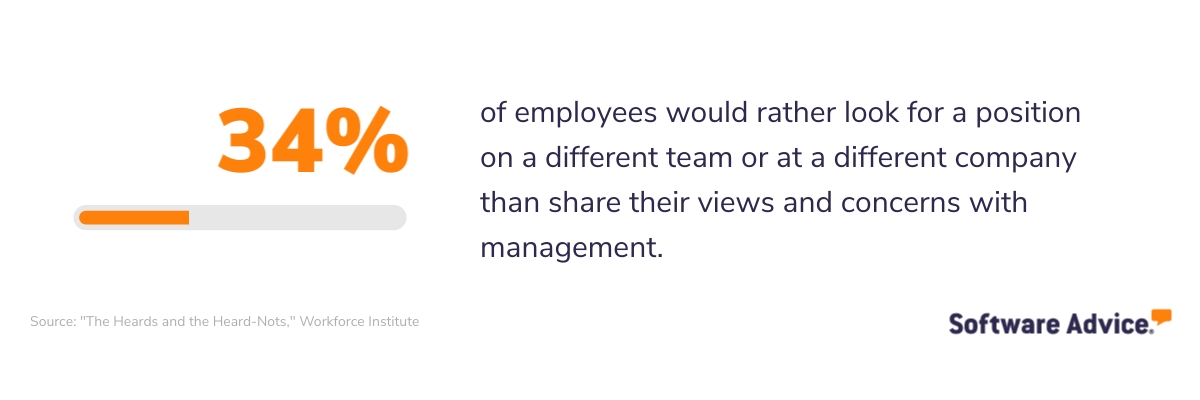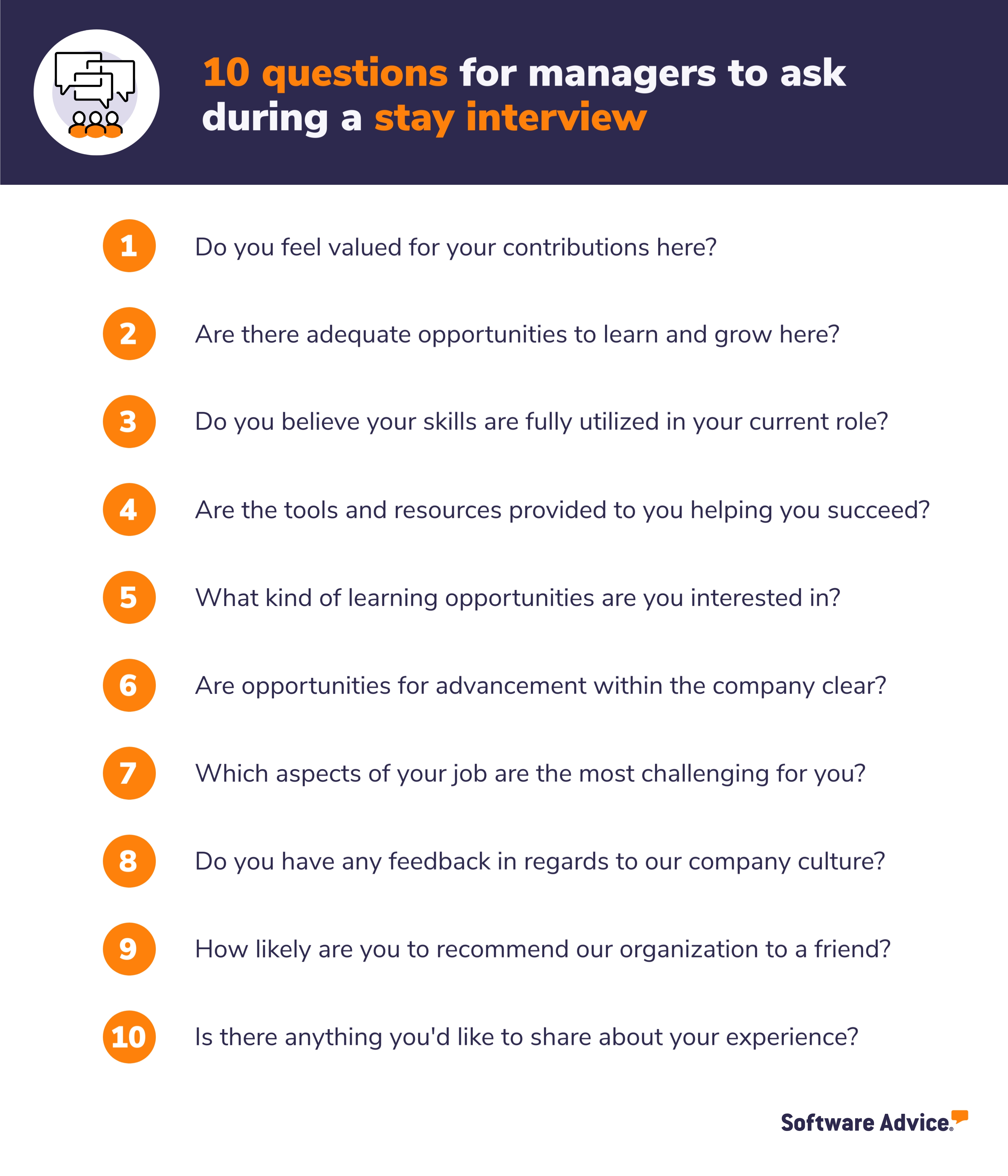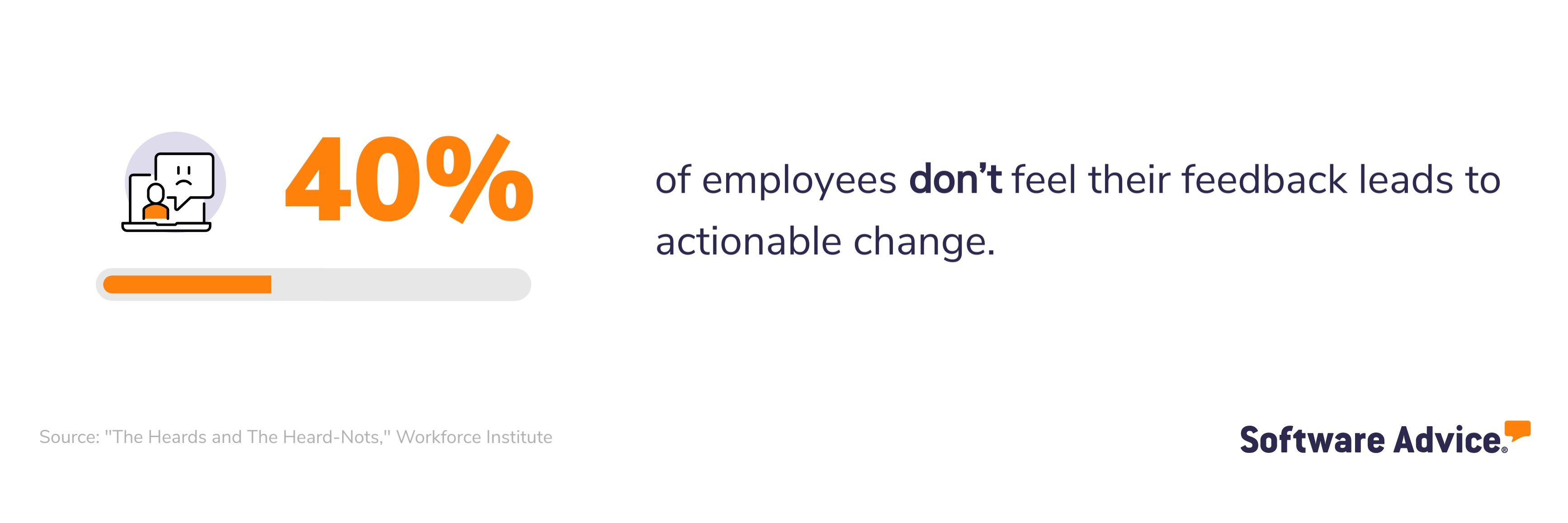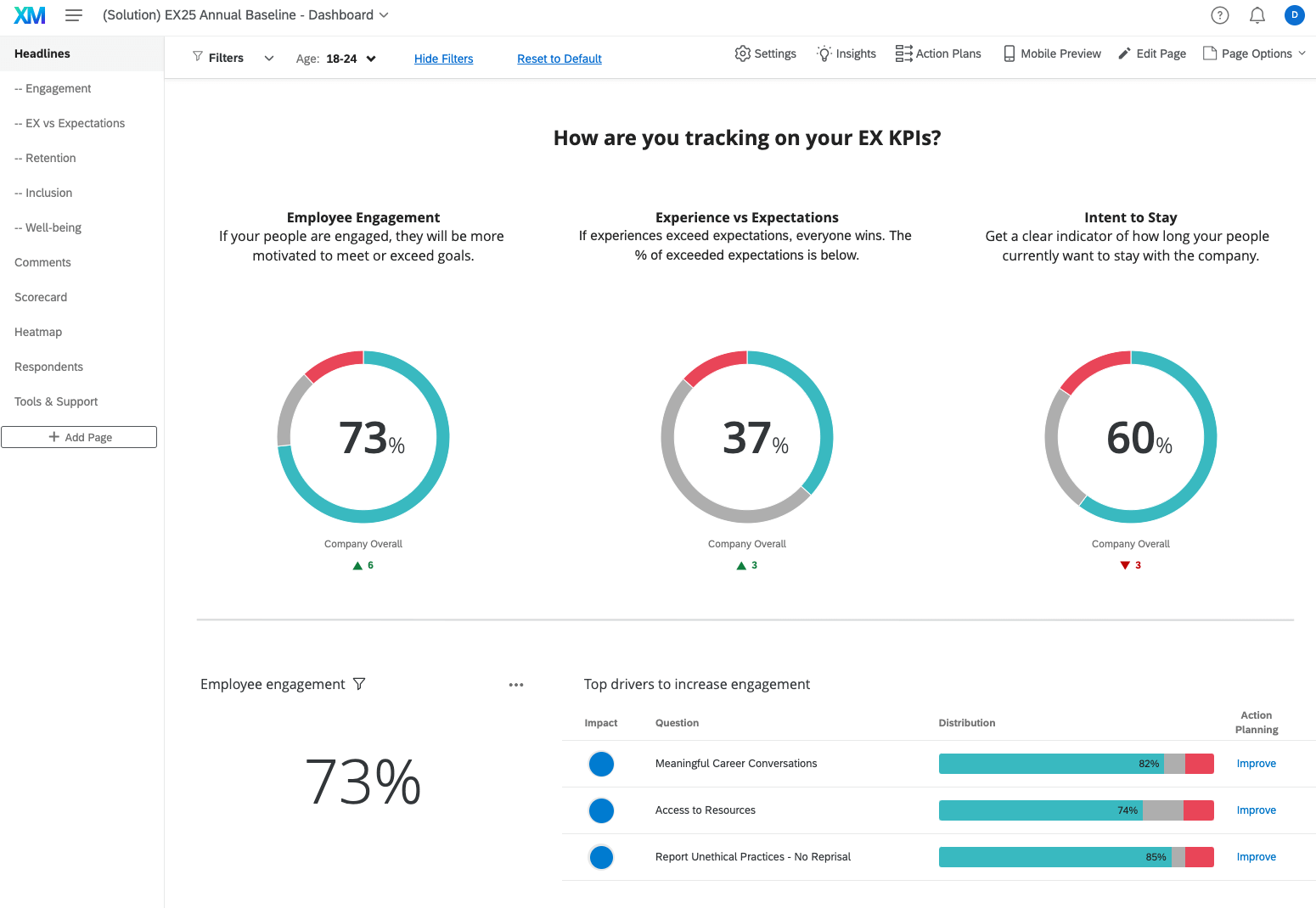What Is a Stay Interview? And More Importantly, Do They Work?
Like many HR professionals, you may be wondering: What’s with all of the buzz around stay interviews?
Well, considering that 98% of HR leaders are concerned about employee turnover [1], stay interviews are a strategy worth exploring further as a means to lower your organization’s voluntary turnover rate and retain top talent.
Ahead, we’ll break down everything you need to know about using stay interviews as a retention tactic. You’ll hear from Tara O’Brien, the head of resourcing at Oxford Health NHS Foundation Trust [2] and receive advice from Gartner’s 5 Actions HRBPs Can Take to Implement Effective Stay Conversations [3].
What is a stay interview?
A stay interview is a structured conversation between an employee and their manager in which the employee’s development goals and job satisfaction are discussed in an effort to improve retention.
The purpose of stay interviews (and why you shouldn’t call them that)
When asked whether stay interviews are a part of O’Brien’s retention strategy at Oxford Health, she said no. In their place, O’Brien regularly holds employee development conversations. She explains:
Tara O'Brien
head of resourcing at Oxford Health NHS Foundation Trust
O’Brien is right. Stay interviews are a relatively new concept in the HR space, and there’s even a debate over whether or not they’re truly effective at improving employee retention [4].
However, if you follow O’Brien’s approach (which is, to treat them like annual development discussions rather than a conversation about how to prevent a worker from quitting), they will be a much more productive addition to your organization’s employee retention efforts.
Tip
O’Brien suggests avoiding using the phrase “stay interview.” When presenting the idea of these conversations to managers and employees, we suggest calling them feedback and/or development conversations.
The power of stay interviews
According to a Workforce Institute survey, approximately one in four employees do not feel heard at their workplace [5]. And it gets worse: The majority (63%) of employees feel their voice has been ignored in some way by their manager or employer.

It’s clear that employees need a dedicated space to express their desires and concerns to managers without fear of retribution, and when done correctly, stay interviews can provide that.
Plus, stay interviews offer additional benefits for managers and employers. According to Gartner, the advantages of effective stay interviews for all those involved can be summarized as follows:
Employees | Managers | Organization |
|---|---|---|
Feeling of being valued and an improved employee experience | More time to address retention issues as they are identified before an employee decides to leave | Increased employee engagement |
Increased engagement due to discussions about their career aspirations | Increased time for managers to plan for turnover | Reduced attrition levels and better retention |
Personalized conversations, where employees share both positive and negative experiences | Lessened employee emotions as these conversations occur before an employee decides to leave | Reduced budgets spent on employee turnover |
When should stay interviews be conducted and by whom?
Because stay interviews are at their most effective when they’re viewed as development conversations, people managers should hold them with their team members once or twice a year.
Managers are the best equipped to take this on because not only are they typically responsible for supporting their direct reports’ career development, they also have more insight into their employees’ skills, strengths, and experience than anyone else in the organization.
During her past experience as a manager, O’Brien approached these conversations with a few key questions top of mind:
“What can I do for you? What can I support you with?
Is there something you want to learn or skills you want to develop?”
She goes on to make the point that not everybody will want career development—sometimes they just want to keep doing the job they’re already doing. Other times, managers may have to accept that the opportunities their team members are looking for aren’t accessible within the organization. O’Brien says:
Tara O'Brien
Best practices for conducting stay interviews
As an HR professional, you can help prepare people managers to hold stay interviews by implementing the best practices below.
Set expectations and explain the process to employees ahead of time
Employees should know ahead of time when stay interviews will occur and what the purpose of them is. Make sure that managers have a set time frame for when they should schedule these conversations (we suggest mid- and/or end-of-year), and ensure that employees understand the goal is to receive honest feedback about their job satisfaction and discuss their career aspirations.
Provide interview question examples to managers
Another thing HR pros can do to help managers prepare for these conversations is share a list of suggested stay interview questions. We’ve put together some examples you can use as a starting point below:

Ensure managers follow up with action items for employees
Once managers have had stay interviews with each member of their team, they need to follow up those conversations by coming up with next steps for each individual employee to take.

Obviously, the proposed next steps will vary depending on what was discussed during the interview. But for example, if an employee mentions wanting to sharpen their presentation skills, the manager could find an opportunity for that individual to create and present a slide deck to the rest of their team.
Tip
Have employees fill out an individual development plan (IDP) so there’s a record of the skills they’re interested in acquiring. You can find a free-to-download IDP template to share with managers in our sources list for this article [6].
Create a process for escalating employee feedback patterns
Considering that decreasing employee turnover is one of the main motivators behind organizations’ adoption of stay interviews, there should be a process in place for managers to escalate patterns of employee feedback to HR. Software such as employee pulse survey tools can help with this (more on that later on), or you can designate an HR professional to act as a liaison between people managers and the rest of the HR department.

A dashboard in Qualtrics EmployeeXM gives a high-level summary of employee engagement (Source)
Final thoughts on conducting effective stay interviews
When treated as an opportunity to gauge an employee’s satisfaction with their role and learn about their career aspirations, stay interviews can be a valuable retention strategy.
As a final word from O’Brien, she shared with us that there have been very few times that she hasn’t known that a team member was thinking of leaving the organization ahead of their departure. She believes this is because of the open line of communication she keeps:
Tara O'Brien
If you’d like to kick off these conversations at your organization, use the best practices we included in this guide to get started. Then, consider investing in tools that support employee engagement and development:
Employee pulse survey tools: This category of tools allows you to create, administer, and track the results of employee surveys. Surveys are a great complement to stay interviews as they can be used to measure employee job satisfaction pre- and post-introducing stay interviews to your workforce.

A breakdown of the results from a specific question in SurveySparrow (Source)
Employee engagement software: These tools offer the ability to collect anonymous feedback from workers, track employees’ performance, analyze data related to engagement, and recognize individuals for their contributions to the organization. As you can imagine, all of these features can help managers take appropriate follow-up actions after conducting stay interviews.
360 degree feedback software: 360 degree feedback platforms help organizations manage the entire feedback process. These tools include question libraries, performance evaluation templates, and rater selection (and anonymity) amongst other features. They are built to automate many steps of the feedback process, making them a great option for teams who want to take a structured, organized approach to conducting stay interviews.
Check out these related topics:
Sources
Tool: Turnover Cost Calculator, Gartner
Tara O’Brien, Head of Resourcing at Oxford Health NHS Foundation Trust, LinkedIn
5 Actions HRBPs Can Take to Implement Effective Stay Conversations, Gartner
The Heard and the Heard-Nots, The Workforce Institute
Individual development plan template, U.S. Office of Personnel Management